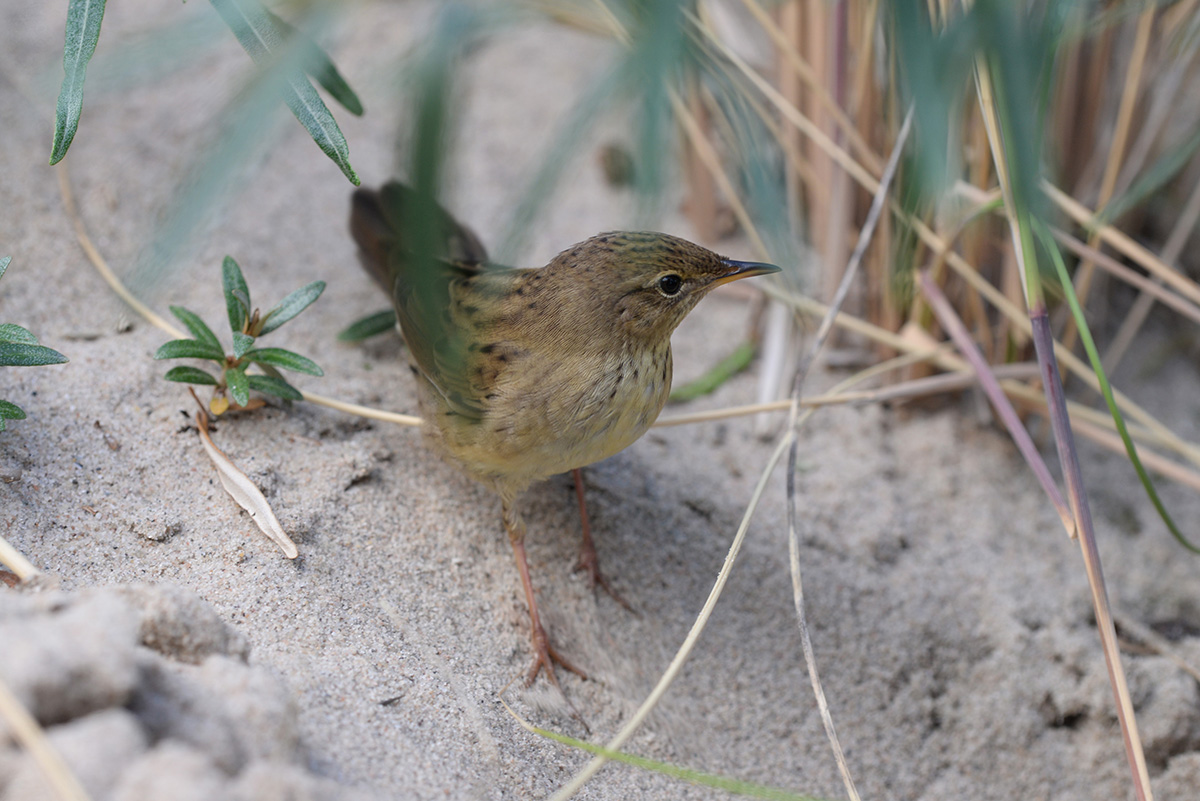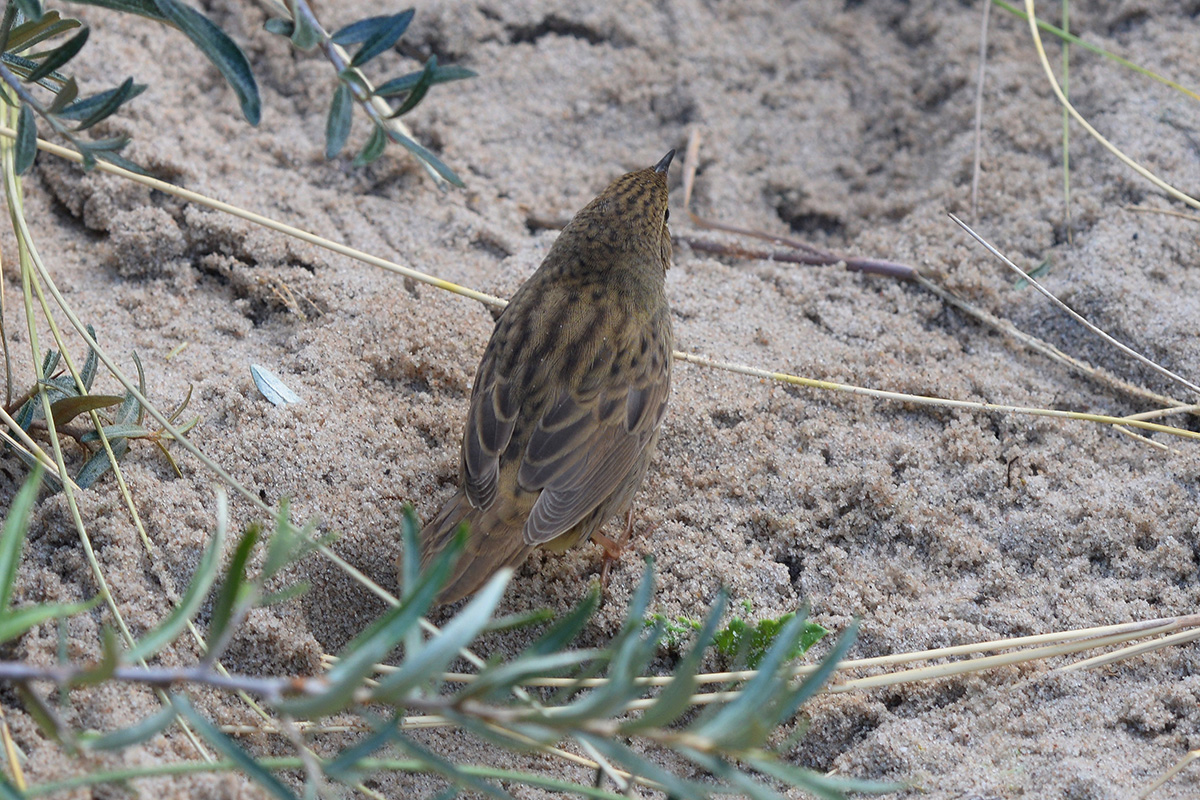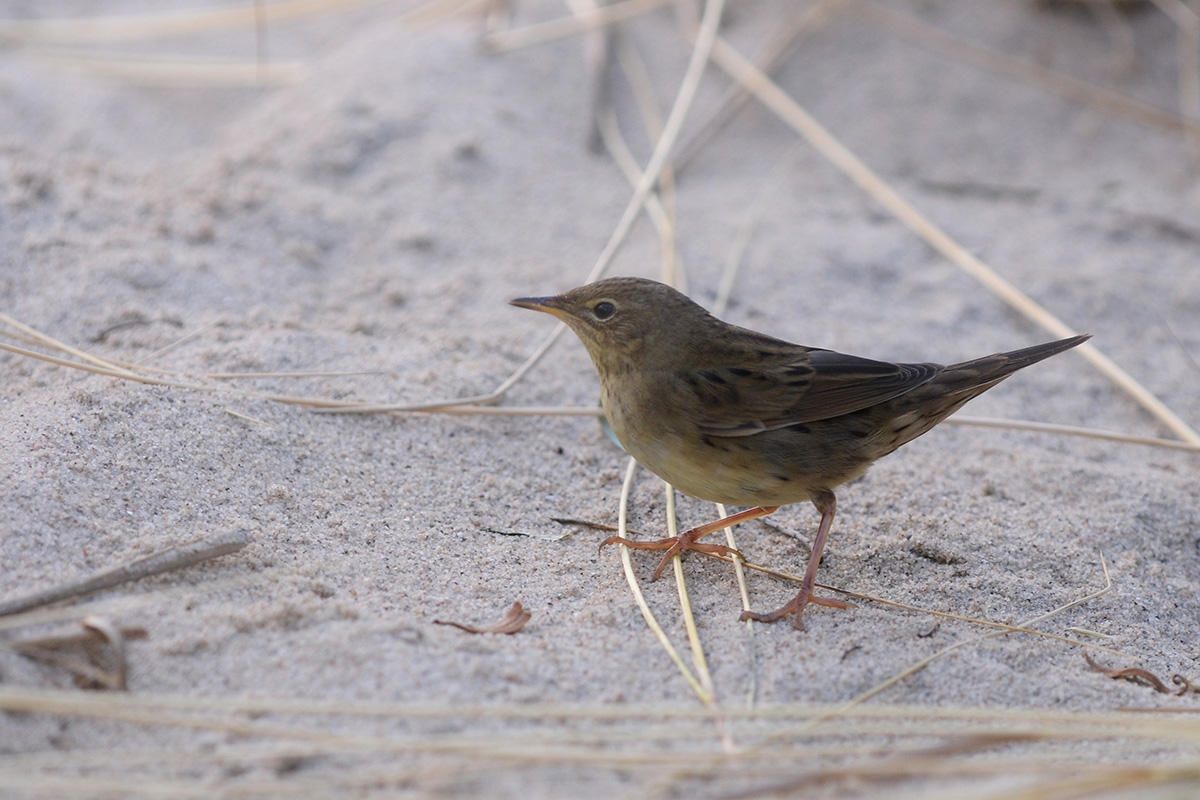
On Tuesday 4 October 2016 twin brothers Jorrit and Ruben Vlot, Arie Kolders and Tim de Boer went birding on the new Maasvlakte, west of Rotterdam. The old part of the Maasvlakte had produced many vagrants in the past like Upland Sandpiper, Bairds Sandpiper, Blyth's Pipit, Isabelline Wheatear or Trumpeter Finch to name a few. Since a few years this industrial area had been extended more into the sea, forming a peninsula and therefore already famous for being a migrant trap. They had already discovered the second Rufous Bush Chat for the Netherlands a few weeks earlier and expectations were very high that morning. At around 11:00 Arie Kolder flushed a Locustella and with the help of the others the bird is found again and pictures were taken. Then they started to consider the possibility of the bird being a Lanceolated Warbler Locustalla lanceolata and spread the photographs on various WhattsApp groups. When pictures of the undertail coverts are seen, the possibility turned into a sure Lanceolated and the news was spread with the Dutch Bird Alerts. The bird was seen till dark. In the evening several pictures taken in bright sunlight were placed on the website of Dutch Birding and Waarneming.nl. These pictures made some people doubt, and although none of the diagnostic plumage characters were taken into consideration, the most influential people in the birding scene withdrew the ID as Lanceolated Warbler, saying it was just a Common Grasshopper Warbler L. naevia. However, Bram Ubels was able to collect one dropping. A DNA sample was taken and after several months of research by Peter de Knijff it became clear the mtDNA fitted Lanceolated Warbler best. This fact became known on 4 February 2017 during the Dutch Birding Day, leaving everybody in a state of total surprise. But to be very sure, Peter de Knijff had to investigate the autosomal DNA as well to exclude hybridisation with L. naevia. In 2020 he announced that the first autosomal DNA fragment fully matched with two lanceolata's and there was no indication of hybridisation with naevia.
I was on Vlieland and we, Sander Lagerveld, Bas Lagerveld, Hans Groot, Nils van Duijvendijk and I decided to hire a speed boat. We left at 13:00 and arrived at Harlingen at around 13:40 and from there we had to drive c 2 hours. Sander and I arrived at 15:45 hours and were able to observe the bird till 17:00 hours.




The bird was not seen again the next day as nobody was looking for it. It was finally accepted as the fourth record for the Netherlands, with previous records on 11 December 1912 at Haamstede Zld, 20 September 2002 at Bloemendaal NH and 5 October 2013 at Ubbergen Gld. The record from September 1958 on weather ship Noord-Hinder, c 45 nautical miles west of Westkapelle Zld, was finally rejected: the exact location of the weather ship turned out to be in the Belgian part of the North Sea.
Go to the main-index, the 2016-index or the next new species, the Siberian Accentor?